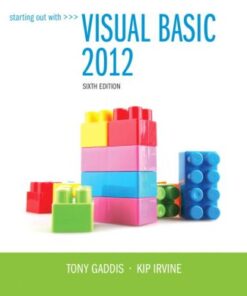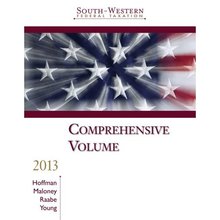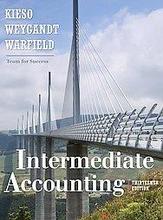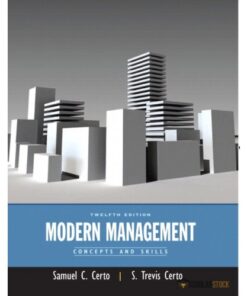Solution Manual for Mathematical Applications for the Management, Life, and Social Sciences, 12th Edition, Ronald J. Harshbarger, James J. Reynolds
$35.00
Solution Manual for Mathematical Applications for the Management, Life, and Social Sciences, 12th Edition, Ronald J. Harshbarger, James J. Reynolds
Solution Manual for Mathematical Applications for the Management, Life, and Social Sciences, 12th Edition, Ronald J. Harshbarger, James J. Reynolds
Table of Contents
0. ALGEBRAIC CONCEPTS.
Sets. The Real Numbers. Integral Exponents. Radicals and Rational Exponents. Operations with Algebraic Expressions. Factoring. Algebraic Fractions.
1. LINEAR EQUATIONS AND FUNCTIONS.
Solutions of Linear Equations and Inequalities in One Variable. Functions. Linear Functions. Graphs and Graphing Utilities. Solutions of Systems of Linear Equations. Applications of Functions in Business and Economics.
2. QUADRATIC AND OTHER SPECIAL FUNCTIONS.
Quadratic Equations. Quadratic Functions: Parabolas. Business Applications Using Quadratics. Special Functions and Their Graphs. Modeling; Fitting Curves to Data with Graphing Utilities (optional).
3. MATRICES.
Matrices. Multiplication of Matrices. Gauss-Jordan Elimination: Solving Systems of Equations. Inverse of a Square Matrix; Matrix Equations. Applications of Matrices: Leontief Input-Output Models.
4. INEQUALITIES AND LINEAR PROGRAMMING.
Linear Inequalities in Two Variables. Linear Programming: Graphical Methods. The Simplex Method: Maximization. The Simplex Method: Duality and Minimization. The Simplex Method with Mixed Constraints.
5. EXPONENTIAL AND LOGARITHMIC FUNCTIONS.
Exponential Functions. Logarithmic Functions and Their Properties. Equations and Applications with Exponential and Logarithmic Functions.
6. MATHEMATICS OF FINANCE.
Simple Interest; Sequences. Compound Interest; Geometric Sequences. Future Values of Annuities. Present Values of Annuities. Loans and Amortization.
7. INTRODUCTION TO PROBABILITY.
Probability; Odds. Unions and Intersections of Events: One-Trial Experiments. Conditional Probability: The Product Rule. Probability Trees and Bayes’ Formula. Counting: Permutations and Combinations. Permutations, Combinations, and Probability. Markov Chains.
8. FURTHER TOPICS IN PROBABILITY; DATA DESCRIPTION.
Binomial Probability Experiments. Data Description. Discrete Probability Distributions; The Binomial Distribution. Normal Probability Distribution. The Normal Curve Approximation to the Binomial Distribution.
9. DERIVATIVES.
Limits. Continuous Functions; Limits at Infinity. Rates of Change and Derivatives. Derivative Formulas. The Product Rule and the Quotient Rule. The Chain Rule and the Power Rule. Using Derivative Formulas. Higher-Order Derivatives. Applications: Marginals and Derivatives.
10. APPLICATIONS AND DERIVATIVES.
Relative Maxima and Minima: Curve Sketching. Concavity: Points of Inflection. Optimization in Business and Economics. Applications of Maxima and Minima. Rational Functions: More Curve Sketching.
11. DERIVATIVES CONTINUED.
Derivatives of Logarithmic Functions. Derivatives of Exponential Functions. Implicit Differentiation. Related Rates. Applications in Business and Economics.
12. INDEFINITE INTEGRALS.
Indefinite Integrals. The Power Rule. Integrals Involving Exponential and Logarithmic Functions. Applications of the Indefinite Integral in Business and Economics. Differential Equations.
13. DEFINITE INTEGRALS: TECHNIQUES OF INTEGRATION.
Area Under a Curve. The Definite Integral: The Fundamental Theorem of Calculus. Area Between Two Curves. Applications of Definite Integrals in Business and Economics. Using Tables of Integrals. Integration by Parts. Improper Integrals and Their Applications. Numerical Integration Methods: The Trapezoidal Rule and Simpson’s Rule.
14. FUNCTIONS OF TWO OR MORE VARIABLES.
Functions of Two or More Variables. Partial Differentiation. Applications of Functions of Two Variables in Business and Economics. Maxima and Minima. Maxima and Minima of Functions Subject to Constraints: Lagrange Multipliers.
APPENDICES.
A. Graphing Calculator Guide.
B. Excel Guide.
C. Areas Under the Standard Normal Curve.
Be the first to review “Solution Manual for Mathematical Applications for the Management, Life, and Social Sciences, 12th Edition, Ronald J. Harshbarger, James J. Reynolds” Cancel reply
Related products
Solution Manual
Human Resource Management 3rd Edition Stewart Solutions Manual
Solution Manual
Solution Manual
Organizational Behavior Robbins 15th Edition Solutions Manual
Solution Manual












Reviews
There are no reviews yet.